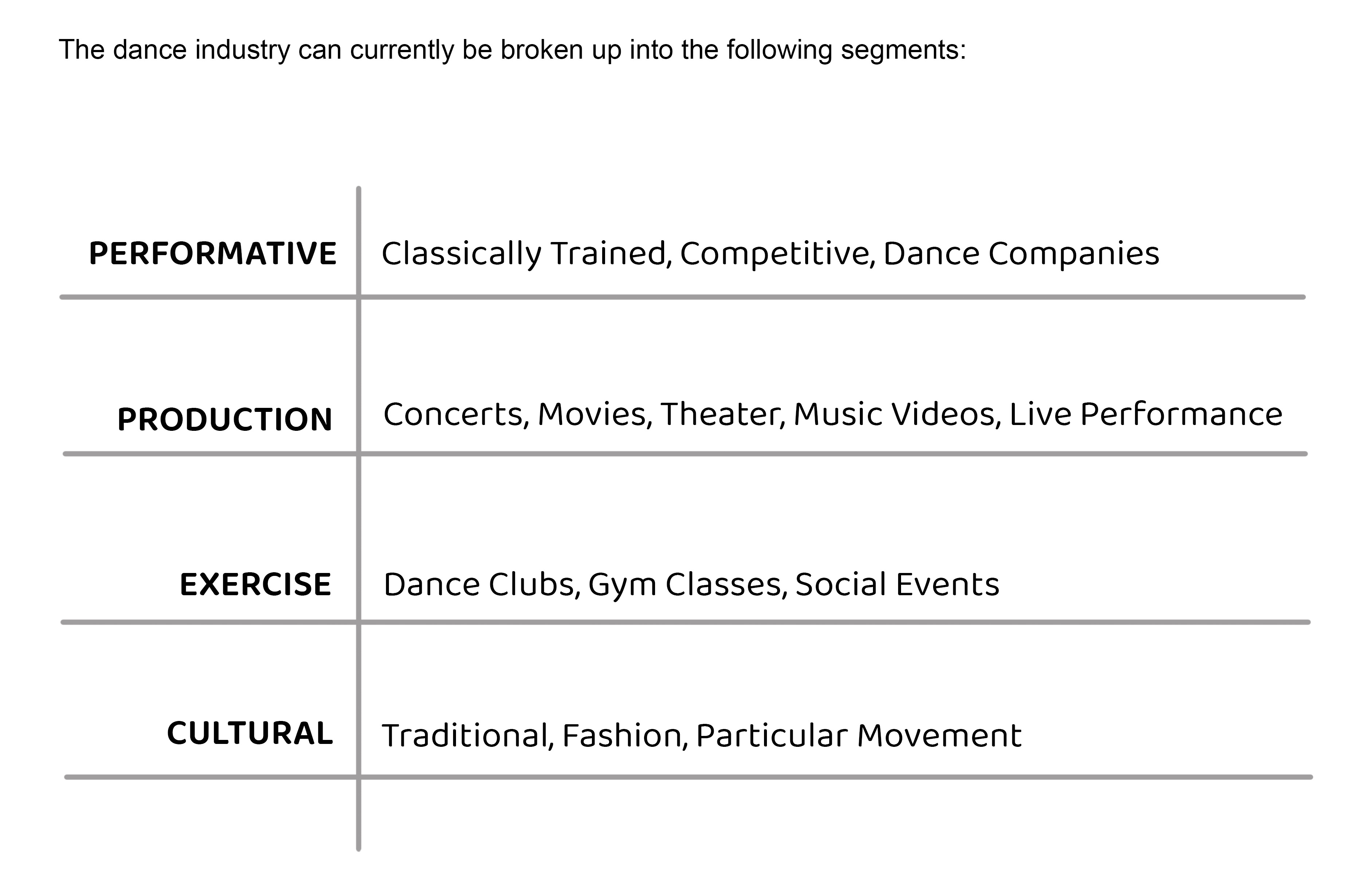Performative is an area of specialty dance focusing on forms many people are most familiar with like Ballet, Pointe, Tap, Jazz, etc. Through our preliminary research we discovered that the average person entering this area of dance to train or teach professionally will typically start at a young age (5-6) with a dance studio. By the time they reach 17 or 18, the decision to work with a dance company will mean 4 hours of classes, 4-6 hours of rehearsals, and a 2-hour evening performance. These hours can vary depending on the position (instructor, choreographer, ballet administrator, artistic director, or producer) but are a normal average for anyone practicing dance in the preformative industry segment. As with other segments, those in performative dance foucus on storytelling through body movement, perfecting form and provoking emotions from an audience.
The Production segment is often equally as rigorous and time-demanding as performative dance. This industry segment involves specialized studios, choreographers, and trainers who develop dance routines for live shows, concerts, theater, music videos, movies, and television. According to there are around 21,000 professional choreographers as of 2018. Although many dance services provided by this segment are subtle and often unrecognized, they are an integral element in live production and a multi-billion dollar entertainment industry.
Exercise through dance is a popular method for individuals, practiced dancers, or not to stay in shape and ensure flexibility and strength in their bodies. Exercise dancing is a segment of the dance industry stands out because it is more about exercise than the technical aspects of dancing. It tends to be trend oriented rather than an original dance exercise. Some examples of this are popular dance classes Zumba, Barr3, and DDMIX. Barr3 is based on barre in ballet while DDMIX is a dance class based on the dance of the Royal Ballet of England. Exercise dance attracts a vareity of participants because it is fun, social, and healthy. Other professional athletes also partake in dance exercise because it improves balance, agility, hand-eve coordination, and minimizes their risk of injury.
Cultural dance refers to global variations of dance and how social and geographic groups interpret the art differently. Among the different types, we chose to research salsa, swing, tango, breakdancing, Bharatanatyam, and Irish dancing. Salsa and tango dancers have similarities in dress; usually, a tight-fitting top, swing skirt, and low heels for women to highlight their figures. In contrast, breakdancing emphasizes footwear and athleticism with apparel fitting loosely. By examining the clothing of different types of dance, our group was able to draw inspiration from aspects of the apparel that were most beneficial to the dancer's experience. Bharatanatyam is a type of dance that originated in India similar in style to dances performed at a Hindu wedding. The emphasis on cultural and religious aspects within this dance is shown through their apparel, many performers use musical anklets and henna tattoos to highlight hand gestures. Similarly, modern Irish dancing is still true to its origins. Dancers wear their hair in traditional curls with adorned outfits symbolizing a mix of their own personality and religious
and cultural influence.

